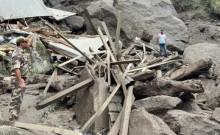Seventy years after the first nuclear bomb used in warfare was detonated over the Japanese city of Hiroshima, the plane that dropped it remains a symbolic attraction at the Smithsonian Institutions National Air and Space Museum in the US state of Virginia.
Paul Tibbets, the pilot who flew the Boeing B-29 Superfortress, painted in block black letters his mothers name, Enola Gay, on the left side of the nose of the plane, giving the historic bomber its name. The Enola Gays mission was the first of its kind and is widely believed to have brought an end to the Second World War in the Pacific.
The death toll by from the blast on 6 August 1945 by the end of the year was estimated at about 140,000, out of the total of 350,000 who lived there at the time. Three days after the Hiroshima bombing, the US dropped an atomic bomb nicknamed Fat Man on Nagasaki.
The Enola Gay was one of 30, out of some 6,000 Boeing B-29 planes produced, that were modified in order to be able to carry such a heavy bomb.
It needs to be made as light as possible so all the defensive ornament all the armor, some of the spar of the wing is actually removed so they can fit the bomb in the fore bomb bay. It had specially propellers that act as brakes upon landing so if they have to land with a bomb they can do that, Dr Jeremy Kinney, aviation curator at the museum said.
It took some 300,000 man hours to restore the Enola Gay which went on display at the museum in its current condition in 2003, he said.
In terms of being a weapon used against another nation in warfare, this is truly a significant artefact that the Smithsonian has to display so people can continue to discuss and debate and have a dialogue about the use of nuclear weapons, Kinney said.

















